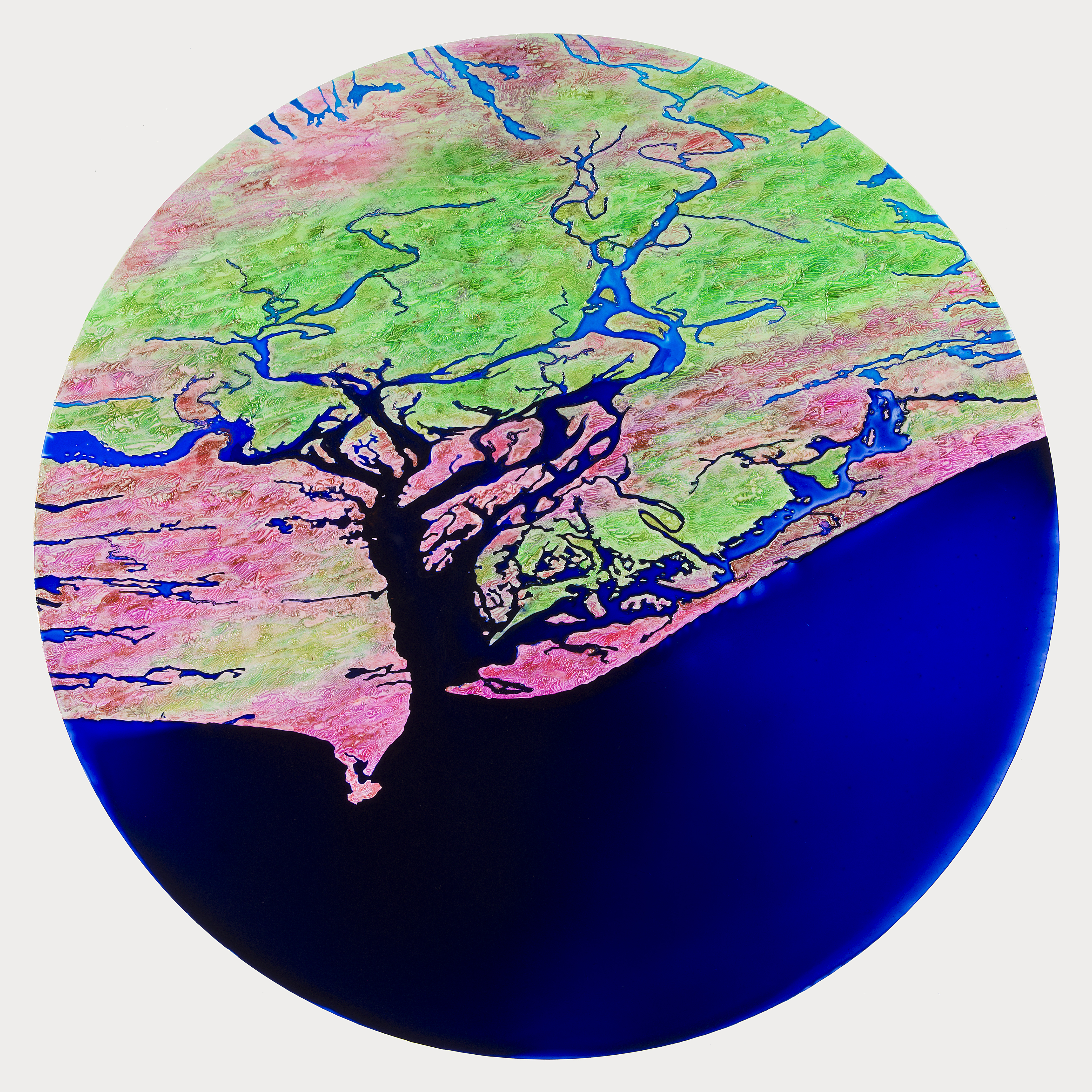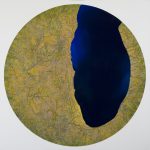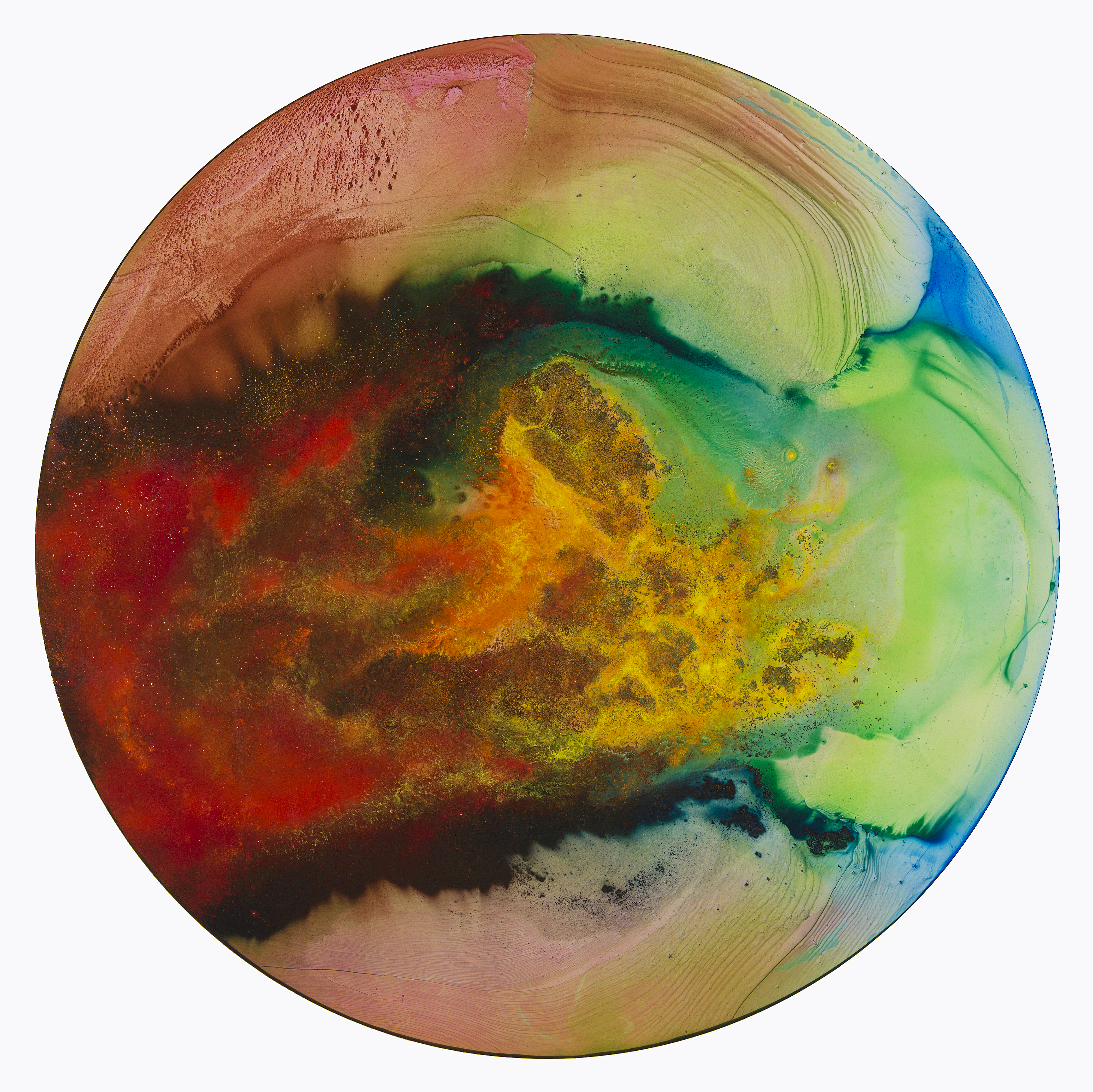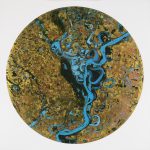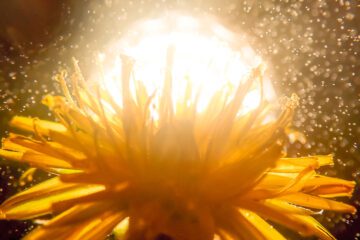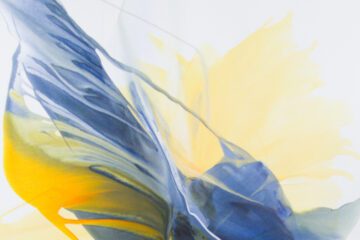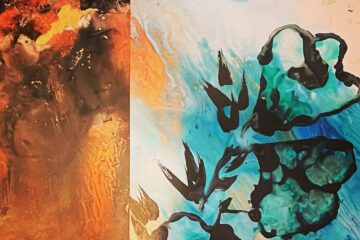Artist Statement
Artist activist John Sabraw is working to return southeastern Ohio’s streams to the picture of health. Sabraw has partnered with Guy Riefler to extract toxic acid mine drainage (AMD) from polluted streams and turn it into paint pigment. Once the pigment is sold on a commercial scale, revenue will be invested back into the streams’ remediation.
Sabraw became inspired to transform the toxic sludge after moving to Ohio. While touring the southeastern part of the state with sustainability group ‘Kanawha’, he was struck by the colors of the local streams – orange, red and brown. The polluted water contained iron oxide, which was flowing freely from abandoned coal mines. Sabraw reflects, “I thought it would be fantastic to use this toxic flow to make paintings rather than with imported iron oxide. It turned out that environmental engineer and fellow Ohio University professor Guy Riefler had already been working to create viable paint from this toxic sludge; so we began collaborating.”
To make the pigment, Sabraw and Riefler intercept the AMD before it gets to the stream. They take the water back to the lab, neutralize it with sodium hydroxide or another base, then bubble oxygen through the water, causing the iron oxide to crystalize and fall to the bottom. The clean water is then returned to the stream. The iron oxide is blended with acrylic polymers and resins to make acrylic paint and with drying oils to make oil paint. Colors range in hues from yellow to brown to red to black, which are achieved by firing the pigment at different temperatures – up to 2000 degrees Fahrenheit – in a kiln at Ohio University’s ceramics studio.
Sabraw tells the pigments’ story via his circular artwork. “I make paintings that express the sublimity of nature but also the fragility of our relationship with it. All of my paintings use these toxic pigments in combination with standard artist colors”, says Sabraw.
Sabraw and Riefler are building a pilot facility that will not only demonstrate their process, but will also serve as an immersive, educational installation. By producing the pigment on a commercial scale, they believe their closed-loop solution will provide the state a great service: restoring polluted streams from their own clean-up. The project will create eco job opportunities and can serve as a model for future environmental clean-up solutions.
Artist Bio: John Sabraw was born in in 1968 in Lakenheath, England. He currently lives in Athens, Ohio. He has a degree in illustration from Pratt Institute, a BFA in painting from the University of Kansas and an MFA in painting from Northwestern University. Sabraw is an artist, environmental activist and Professor of Art at Ohio University. His work can be seen at johnsabraw.com, where images for media use may be downloaded. He is represented by Thomas McCormick Gallery in Chicago. His work has been collected by the Museum of Contemporary Art in Honolulu, the Elmhurst Museum in Illinois, Emprise Bank and Accenture Corp. Sabraw has been featured by TED, Smithsonian Magazine, New Scientist and Great Big Story.

